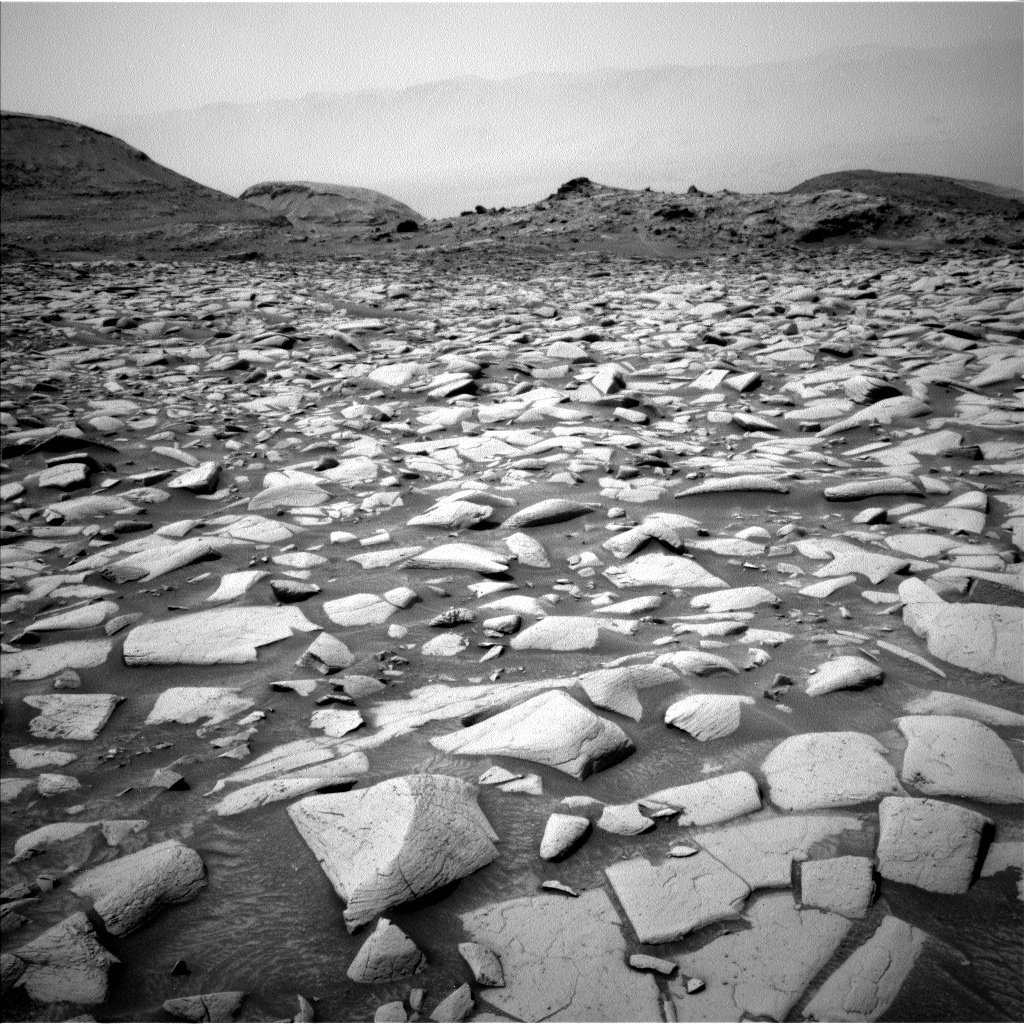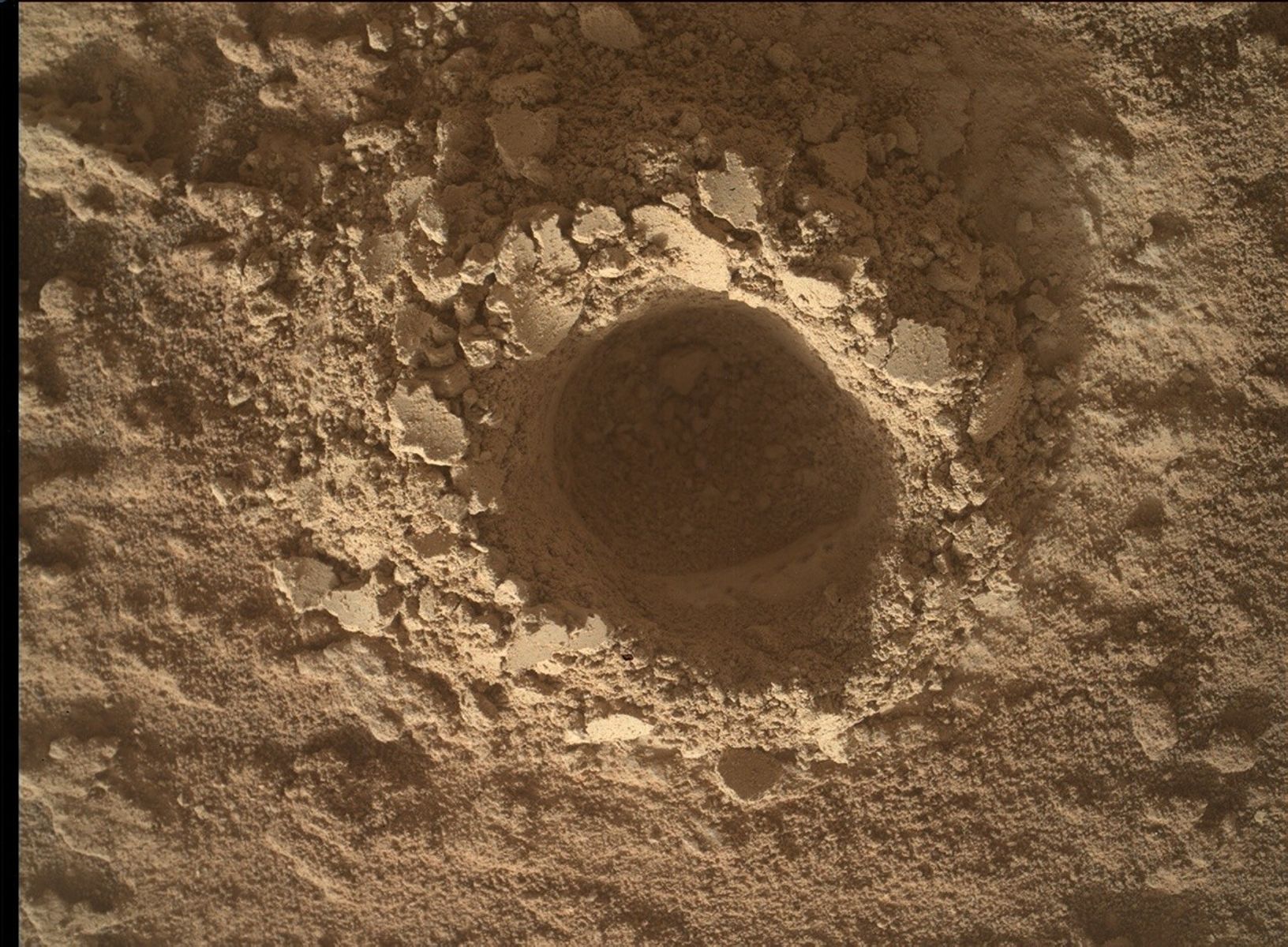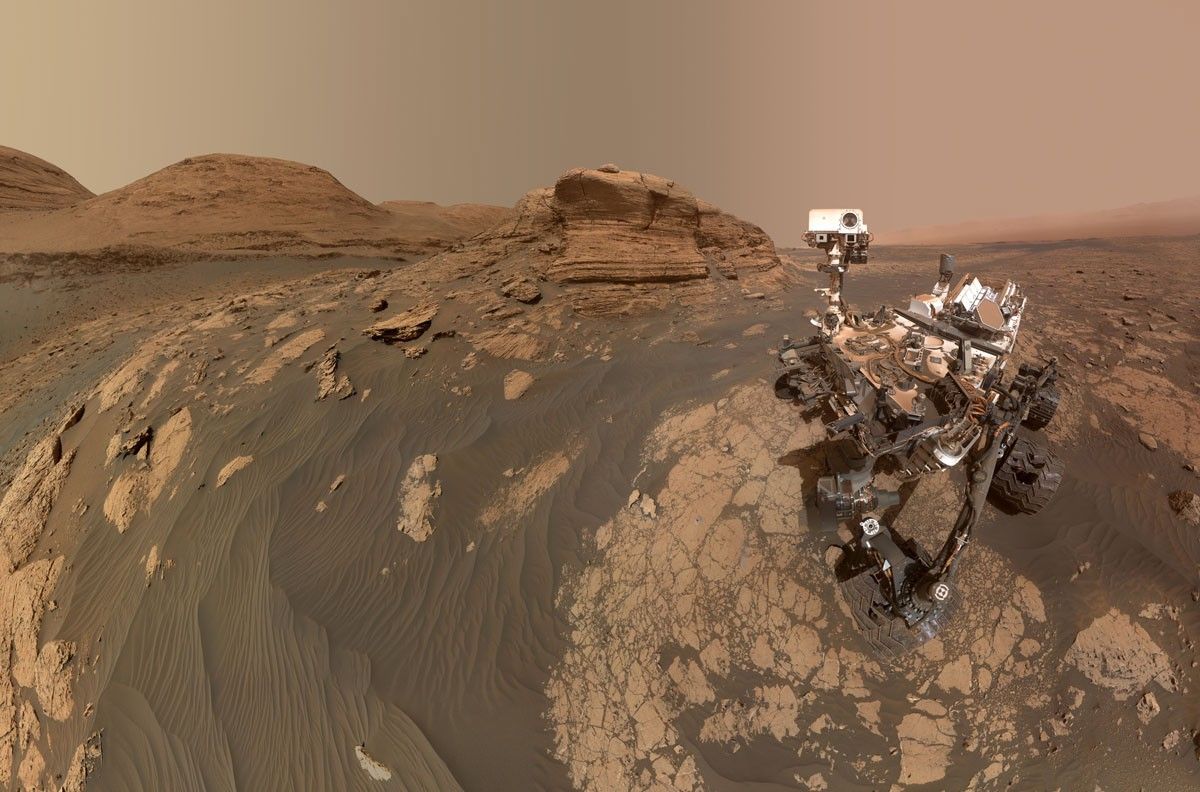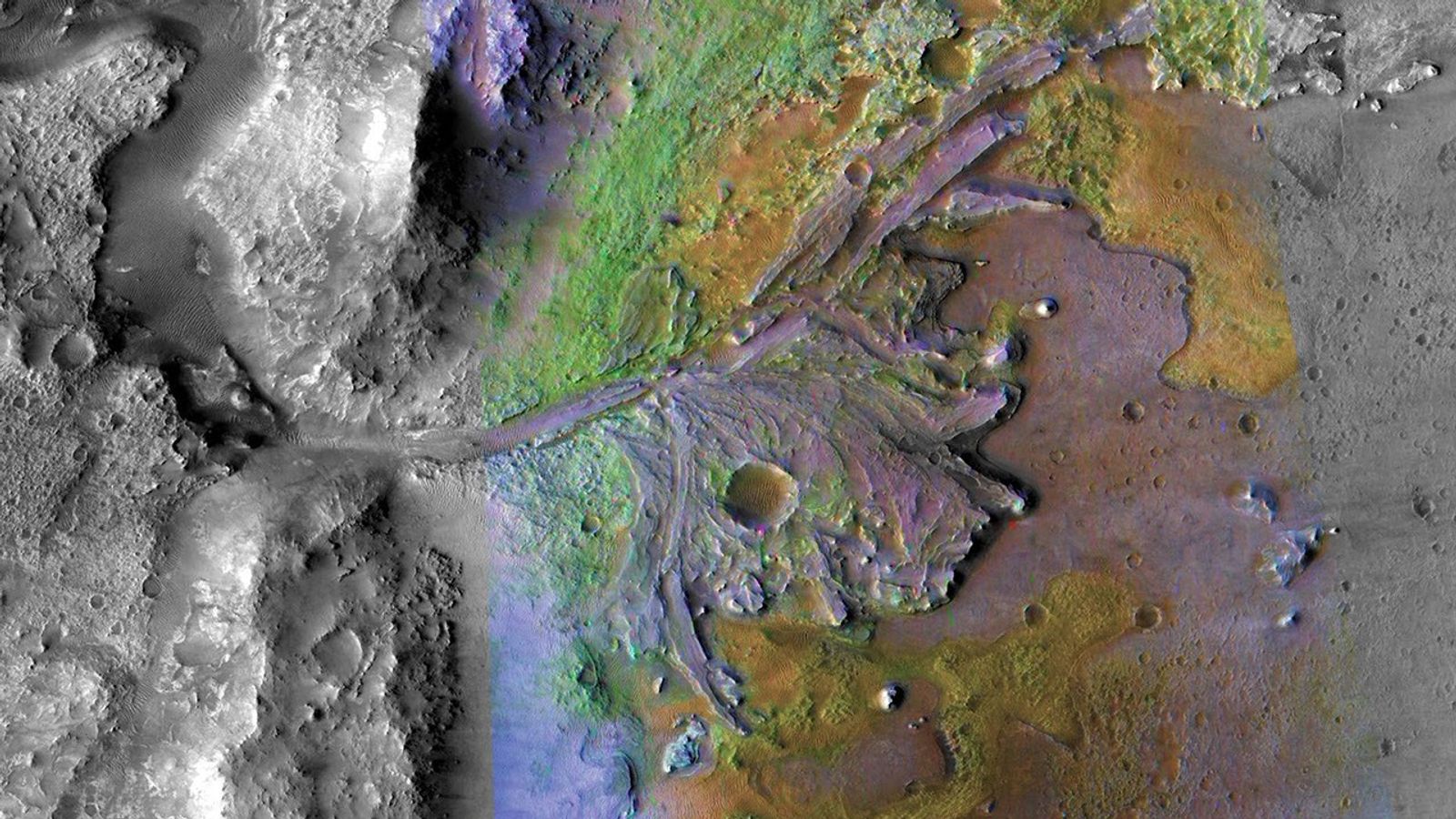Earth planning date: Wednesday, April 10, 2024
The extremely rocky terrain wasn’t a problem for Curiosity’s rover drivers on Monday, and we learned this morning that the drive they planned completed successfully. Today’s two-sol plan will take the familiar form of a “two-sol touch and go.” In this style of plan, we perform contact science and drive on the first sol, and then we spend the second sol taking “untargeted” science observations, which can be planned without knowledge of the rover’s location. For the contact science target, the team settled on investigating a piece of the bedrock in front of us that is flat enough to be brushed and then analyzed by MAHLI and APXS. We named the target “Burro Pass.” We will also collect some remote sensing data before we drive away, pointing Mastcam and ChemCam’s RMI at various geologic features around us, and zapping a darker looking rock with ChemCam’s laser on a target we named “Graveyard Peak.” We’ll then pack up and drive a few tens of meters to the southwest, heading much closer to Gediz Vallis ridge for some good imaging opportunities on Friday. We’ll fill the rest of the plan with observations to monitor the environment, including atmospheric conditions and surface radiation.
My role today was the “Long Term Planner.” One of the responsibilities I have in that role is to put together a presentation for the science team that gives a big picture overview of Curiosity’s science goals for the next weeks or months. I had extra fun in my presentation today because I added some slides showing photos taken by members of Curiosity’s operations team of the total solar eclipse which crossed a large portion of North America on Monday. Curiosity-ians traveled everywhere along the path of totality, from Mexico to Maine, to view the celestial sight, and I learned that they are not just talented photographers on Mars, but also here on Earth! I remained in Pasadena on Monday, so I was able to view the partial solar eclipse as it passed over JPL. I didn’t take any of my own images, but I did remind that team that technically we are all solar eclipse photographers – we’ve helped Curiosity capture several images of solar eclipses on Mars, including some very cool ones nearly five years ago, Mars’ moons Phobos and Deimos are teeny tiny compared to Earth’s Moon, so they aren’t able to block out the sun in the same way. Solar eclipses on Mars are a spectacular sight, and it blows my mind that we can predict them and subsequently image them using a robot on the surface millions of miles away! Seeing these images also gives me yet another reason to feel so grateful for this planet we live on and its Goldilocks Moon, sized just right to produce a little bit of magic when the stars align.
Written by Abigail Fraeman, Planetary Geologist at NASA's Jet Propulsion Laboratory
































